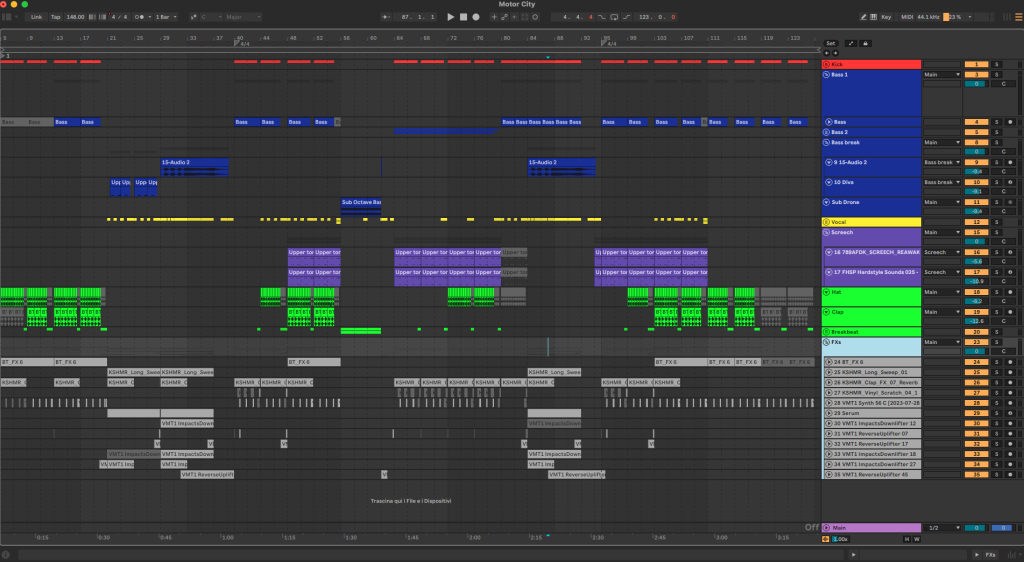Gabry Ponte has never been one to stay in one lane. With over 6 billion streams, multiple Diamond certifications, and a career that spans 25 years, the Italian producer has built a reputation for moving between chart-topping hits and club-focused weapons with the same precision. His latest release, “Motor City,” is a sharp-edged edit of the Detroit techno anthem “Put Your Hands Up,” and it marks a clear statement of intent for his label PENTAPHONIA Records – a home for his harder, more underground material.
For this feature, Gabry breaks down the production behind “Motor City” in detail, from the metallic bass created with u-he Diva to the layered screech samples and a tight, efficient master chain. Every element reflects the track’s focus: stripped-down tools, no wasted space, and a mix engineered for impact on the dance floor.
u-he Diva
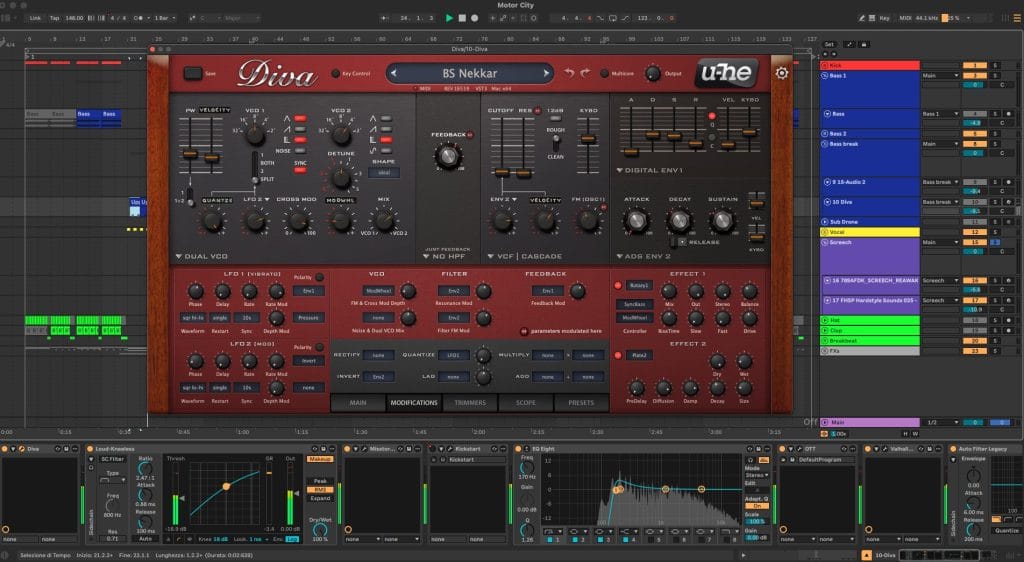
u-he Diva is a virtual analog synth that combines the architecture of several iconic analog machines. It’s known for the fat and warm tone and flexible oscillators and filter sections. Diva can sound modern or perfectly vintage depending on how you dial it in. It’s CPU-hungry, but the sounds have a layer of analog imperfection that’s hard to fake with lighter plugins.
For Motor City, we used Diva to create the synth bass you hear during the break. The goal was to get a tone that felt metallic, slightly aggressive, and full of harmonic presence without overpowering the rest of the mix. We started with one preset called BS Nekkar then tweaked it with EQ and compression to shape the tone further, and we added a small amount of reverb to tuck it nicely into the space. It cuts through the mix with bite.
If you’re into techno or any heavy material, Diva’s got some serious sounds to explore. If you like going deep with sound design, it gives you the flexibility to shape everything precisely.
First Key Sound: Screech Sample (Layer 1)
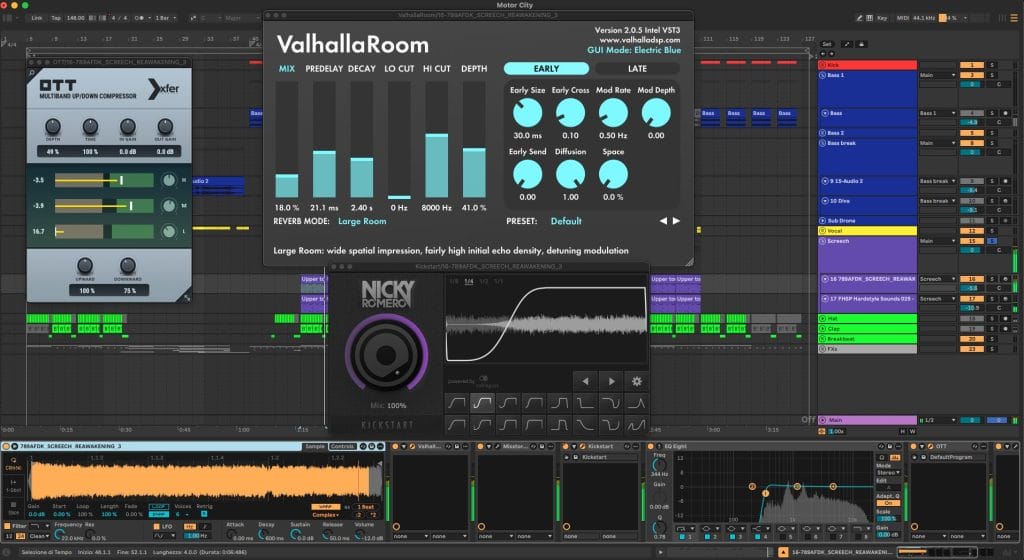
This sound isn’t a synth but a sample. A classic hardstyle-style screech, which we used in the drop. The original sample had potential, but it needed processing to give it modern weight and presence.
The FX chain was essential here. Xfer OTT was first in line. This is one of the most famous multiband compressors out there. The sample was a bit behind in the mix and OTT made it brutally present. It gave extra punch and forwardness. Then we added Nicky Romero’s Kickstart for sidechain pumping in sync with the kick. To give it spatial depth, we used Valhalla Room with a “Large Room” setting but carefully adjusted to avoid the muddiness.
If you’re producing hard techno, samples can be your best friends, but it’s important to understand that maybe it sounded good on its own, but that doesn’t mean it’s mix-ready. Sometimes a great sample still needs serious work to really earn its place in the track.
Second Key Sound: Drop Synth Layer 2 (Textural Support)
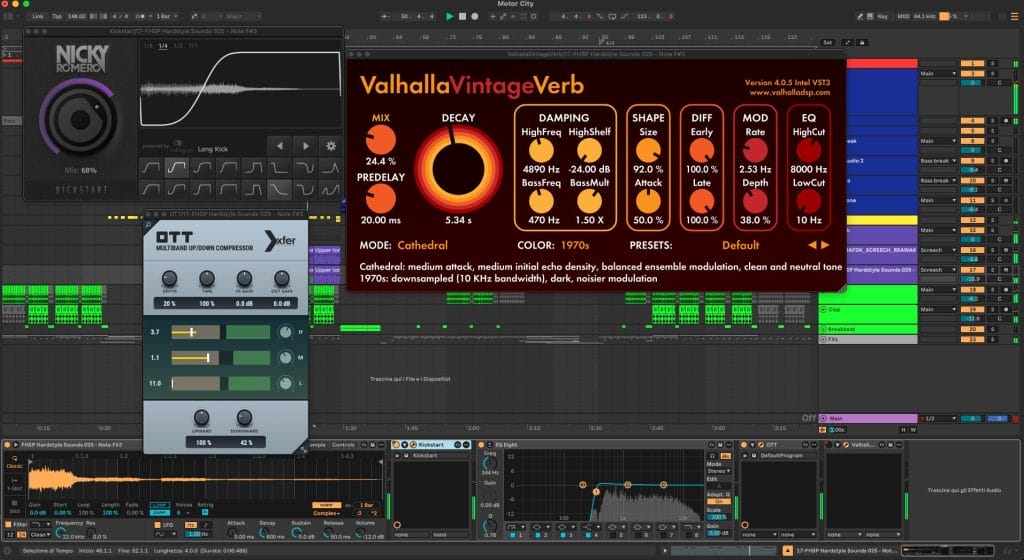
This second layer was added to support the main screech and bring more texture and stereo width to the drop. It’s also a sample, but with a slightly different tone. It’s less abrasive but has more body. Layering like this is not about volume, but contrast, character, and texture.
The processing here was similar. OTT again, but used more gently this time: less upward compression, less gain. Kickstart was added again to match the sidechain rhythm and keep the layers locked together. What changed here was the reverb. For this one, we used Valhalla VintageVerb in “Cathedral” mode, with the Color set to 1970s that gave the sound a wider lush tail that blends perfectly behind the main layer.
Again, muddyness is just around the corner. So if you’re stacking different reverb presets or different plugins that make the same thing but differently, make sure each one plays a clear role in the mix. Otherwise, you’ll lose clarity and kill the energy.
Bonus Section: The Master Chain
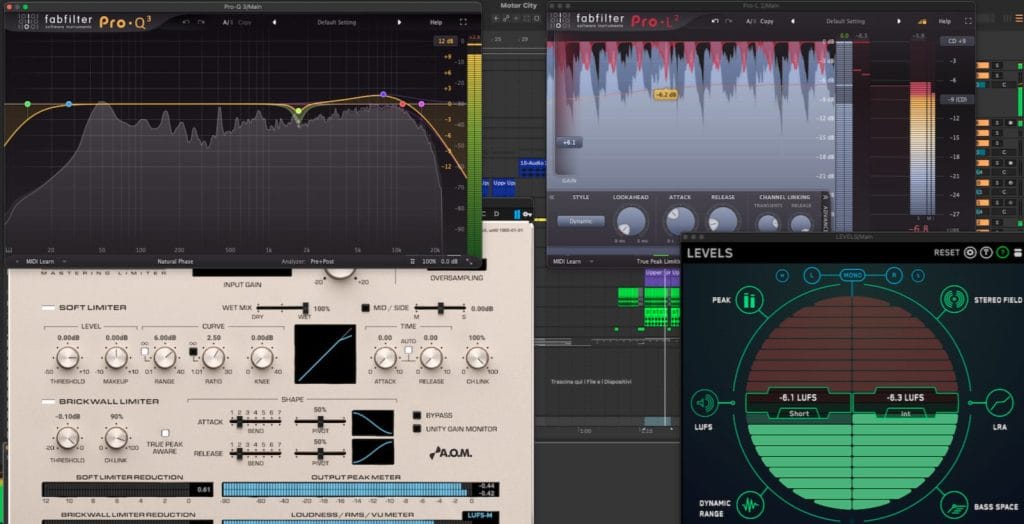
We kept the master chain lean but powerful. FabFilter Pro-Q 3 was used for subtle mid/side EQ cleanup, and final tonal shaping. Then FabFilter Pro-L 2 did the heavy lifting, transparently raising the volume without crushing the peaks. The final touch was A.O.M. Invisible Limiter, which glued the track together and gave us a loud master that still breathed. We also ran LEVELS in real time to keep LUFS, true peaks, and dynamic range in check.
If you’re working on this kind of track, your master needs to hit hard without choking the dynamics. A solid chain should give you loudness and clarity, but also let the track breathe and carry energy on a big system.
Quick Fire Tips For Making This Genre
#1 – Just because a sample sounds cool solo doesn’t mean it works in the mix. Process it, twist it, make it earn its place.
#2 – Layering is great but if every sound fights for the same frequency space, you’re not layering, you’re smearing.
#3 – Reverb should add character, not only decoration.
#4 – Loudness is the last step. Focus on a tight, clean mix first.
The post How I Made Feature: Gabry Ponte ‘Motor City’ appeared first on Magnetic Magazine.






